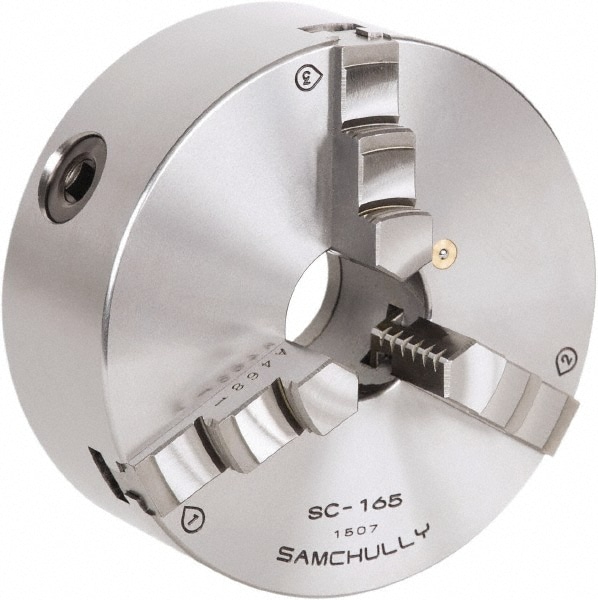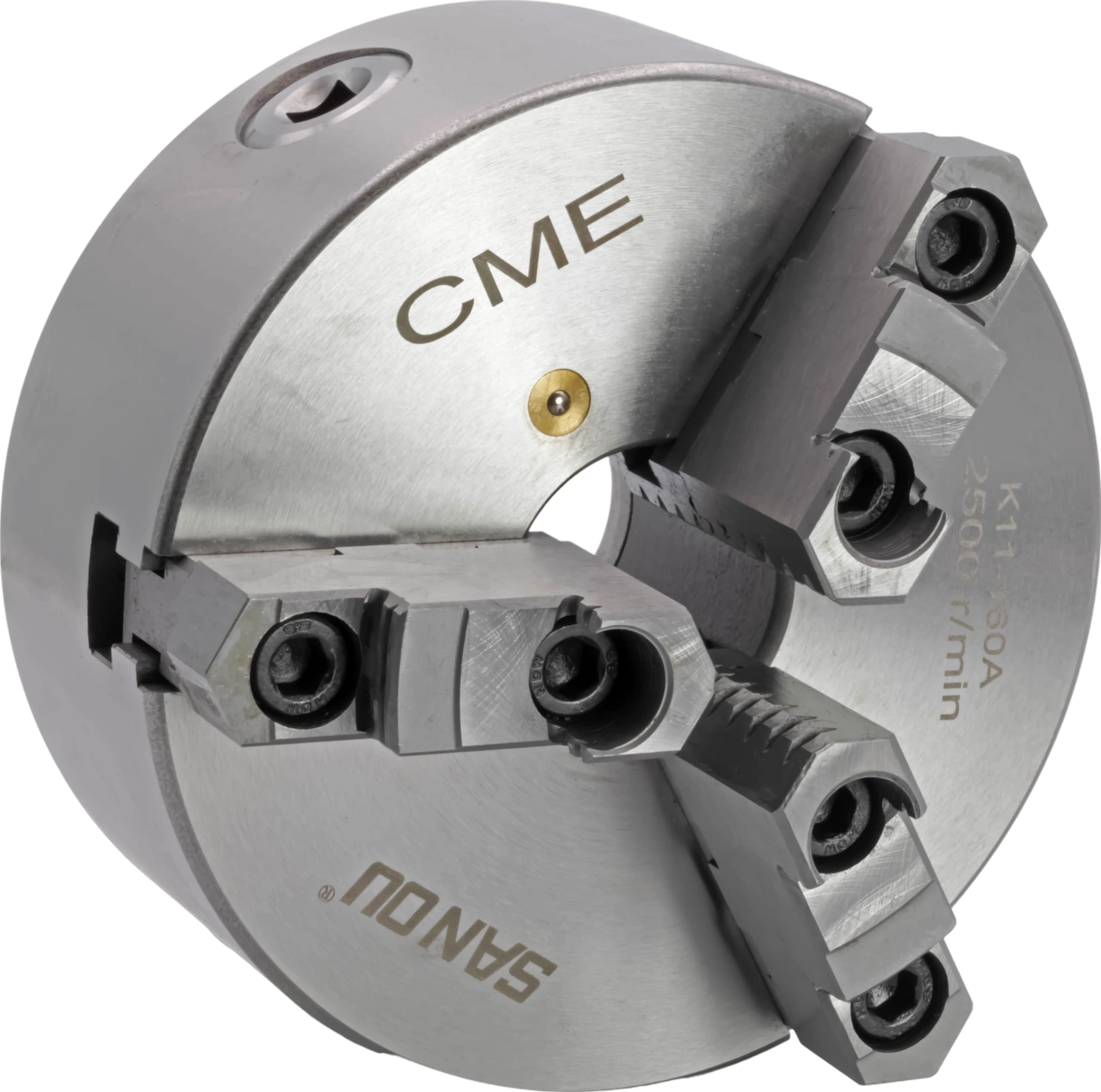Welcome to the world of lathe chuck! So, what is lathe chuck exactly? Well, imagine a super cool device that holds and grips materials in place while a lathe machine spins them. It’s like a trusty partner for any aspiring or seasoned woodworker out there!
Now, you might be wondering why this contraption is so important. Let me tell you, my friend, a lathe chuck is essential for turning raw materials into beautifully crafted objects. It ensures stability, accuracy, and efficiency, making woodworking projects a breeze. So, let’s dive into the wonderful world of lathe chuck together and unlock its secrets!
Alrighty then, let’s get started on this jaw-dropping adventure into the fascinating realm of lathe chuckery! Whether you’re a newbie or a seasoned craftsman, understanding this nifty device is crucial in unleashing your creative potential and taking your woodworking skills to new heights. So, buckle up and let’s explore the awesome world of lathe chuck!

The Ins and Outs of a Lathe Chuck: Exploring the Fundamentals
Lathe machines are versatile tools used in various industries to shape and cut materials. At the heart of every lathe machine lies a critical component called a lathe chuck. In this article, we will delve into the details of a lathe chuck, exploring its purpose, types, and functions. Whether you are a beginner or a seasoned professional, understanding the intricacies of a lathe chuck is essential for maximizing the efficiency and precision of your lathe machine.
The Purpose of a Lathe Chuck: Holding and Rotating Workpieces
A lathe chuck is a device that securely holds and rotates workpieces during machining operations. It is typically mounted onto the spindle of a lathe machine and plays a crucial role in providing stability, accuracy, and control throughout the machining process. The primary function of a lathe chuck is to tightly grip the workpiece, allowing for precise cutting, shaping, and drilling operations.
Lathe chucks come in different sizes and configurations, catering to a wide range of workpiece dimensions and shapes. They consist of jaws or clamping mechanisms that can be adjusted to accommodate different workpiece diameters. The versatility of a lathe chuck allows for the machining of various materials, including metals, plastics, and wood, making it an indispensable tool in industries such as manufacturing, woodworking, and metalworking.
A lathe chuck provides several benefits, including improved workpiece stability, enhanced accuracy, and increased efficiency. By securely holding and rotating the workpiece, it minimizes vibrations and movement, resulting in precise and consistent cuts. It also eliminates the need for external clamps or fixtures, simplifying the setup process and saving valuable time.
The Various Types of Lathe Chucks: Exploring Your Options
There are several types of lathe chucks available on the market, each designed to suit specific machining requirements. Understanding the different types will help you choose the most suitable chuck for your intended applications.
1. Three-Jaw Self-Centering Chuck:
The three-jaw self-centering chuck is one of the most common types of lathe chucks. As the name suggests, it consists of three jaws that can automatically center and grip the workpiece simultaneously. These chucks are easy to operate and ideal for holding cylindrical or round workpieces with a consistent diameter.
Benefits:
- Efficient and time-saving chucking process
- Self-centering feature reduces setup time
- Suitable for a wide range of workpiece sizes
2. Four-Jaw Independent Chuck:
The four-jaw independent chuck offers greater flexibility compared to the three-jaw chuck. It consists of four individually adjustable jaws that can be moved independently to grip irregularly shaped or non-concentric workpieces. This type of chuck allows for precise positioning, making it suitable for intricate machining operations.
Benefits:
- Accommodates irregularly shaped workpieces
- Allows for precise alignment and positioning
- Offers superior gripping power
3. Collet Chuck:
Collet chucks use collets, which are specialized holding devices that clamp onto the workpiece. They are primarily used for holding cylindrical workpieces with small diameters. Collet chucks offer exceptional concentricity and gripping force, making them ideal for high-precision machining.
Benefits:
- Excellent concentricity and accuracy
- High gripping force
- Quick and convenient workpiece changes
4. Scroll Chuck:
A scroll chuck utilizes a scroll plate mechanism to grip the workpiece. The chuck contains multiple jaws that move simultaneously when tightened, ensuring a uniform grip on the workpiece. Scroll chucks are commonly used for general-purpose machining and offer a good balance between convenience and accuracy.
Benefits:
- Quick and secure workpiece clamping
- Uniform gripping force
- Suitable for a wide range of machining needs
5. Magnetic Chuck:
Magnetic chucks use powerful magnets to hold ferromagnetic workpieces securely. They are commonly used in metalworking industries and allow for easy and rapid workpiece changes. Magnetic chucks offer excellent accessibility to the workpiece, as there are no jaws or clamping devices that obstruct machining.
Benefits:
- Effortless workpiece changes
- High holding force
- Enables full access to the workpiece
Key Takeaways: What Is Lathe Chuck?
- A lathe chuck is a device used in a lathe machine to hold and rotate the workpiece.
- It consists of jaws or clamps that grip onto the workpiece securely.
- Lathe chucks come in various types, such as 3-jaw, 4-jaw, and collet chucks, each suitable for different applications.
- The chuck is attached to the lathe spindle and can be adjusted to hold different-sized workpieces.
- Lathe chucks are essential for precision turning and machining operations.
Frequently Asked Questions
In this section, we will answer some common questions related to lathe chucks.
1. How does a lathe chuck work?
A lathe chuck is a device that holds the workpiece on a lathe. It consists of movable jaws that clamp onto the workpiece, securing it in place while it rotates. The chuck is mounted onto the lathe spindle, allowing the workpiece to rotate at various speeds. This rotation is essential for cutting, shaping, or drilling the workpiece with precision.
When the lathe is turned on, the chuck’s jaws grip the workpiece firmly, preventing it from moving. This ensures stability and accuracy while carrying out machining operations. The chuck can be adjusted to accommodate different sizes and shapes of workpieces, making it a versatile tool in lathe operations.
2. What are the types of lathe chucks available?
There are several types of lathe chucks available, each designed for specific applications. The most common types include:
– 3-jaw chuck: This is the most basic type, consisting of three movable jaws that move simultaneously to hold round or hexagonal workpieces.
– 4-jaw chuck: This chuck has four independently movable jaws, allowing for greater flexibility in holding irregularly shaped or off-center workpieces.
– Collet chuck: It is used for holding cylindrical workpieces with high precision. Collet chucks are often used for delicate and small parts.
– Magnetic chuck: This type of chuck uses magnets to hold ferromagnetic workpieces securely, without the need for jaws.
– Scroll chuck: It is a self-centering chuck that uses an internal scroll mechanism to move the jaws simultaneously, ensuring quick and accurate centering of the workpiece.
– Faceplate: This is a flat plate attached directly to the lathe spindle and is used for holding large or irregularly shaped workpieces.
3. What are the advantages of using a lathe chuck?
Using a lathe chuck offers several advantages:
– Versatility: A lathe chuck can hold various types of workpieces, whether they are round, irregularly shaped, or even delicate.
– Stability: The jaws of a lathe chuck provide a secure grip on the workpiece, preventing it from moving during machining operations. This ensures precise and accurate cutting.
– Time-saving: With a lathe chuck, you can quickly change workpieces without the need for complex adjustments, increasing efficiency in your machining processes.
– Easy centering: Self-centering chucks, such as the 3-jaw and scroll chucks, make it easy to center the workpiece, saving time and effort.
– Safety: A lathe chuck securely holds the workpiece, reducing the risk of accidents caused by workpiece movement during machining.
4. How do I choose the right lathe chuck for my needs?
Choosing the right lathe chuck depends on several factors:
– Workpiece size and shape: Consider the size and shape of the workpieces you will be working with to ensure the chuck can accommodate them.
– Precision requirements: For applications that require high precision, collet chucks or precision scroll chucks are recommended.
– Type of lathe: Different types of lathes may require specific chuck types or sizes, so consult your lathe’s manual or manufacturer for compatibility.
– Application: Consider the specific machining operations you will be performing, as certain types of chucks are better suited for particular tasks.
– Budget: Price can vary depending on the type and quality of the chuck, so it’s important to consider your budget when making a decision.
5. How do I maintain and care for a lathe chuck?
Proper maintenance and care can extend the lifespan of your lathe chuck:
– Clean regularly: Remove any dirt, chips, or debris from the chuck jaws and internal mechanism to ensure smooth operation.
– Lubrication: Apply a light coating of lubricant to the chuck’s moving parts to prevent corrosion and ensure smooth movement.
– Check for wear: Regularly inspect the chuck jaws and internal components for signs of wear or damage. Replace any worn-out or damaged parts.
– Calibrate if necessary: If you notice any issues with accuracy or gripping force, consult your lathe chuck’s manual for instructions on calibrating or adjusting the chuck.
– Store properly: When not in use, protect the chuck from dust and moisture by covering it or storing it in a clean and dry place.

Summary
A lathe chuck is a tool that holds and rotates objects like wood or metal. It has movable jaws that grip the object tightly. Chucks come in different sizes and types, like the four-jaw chuck or the three-jaw chuck. They are useful in many industries, from woodworking to metalworking.
Using a lathe chuck is important because it helps secure the object being worked on. This allows for precise shaping and cutting. Chucks are easy to use and can be adjusted to fit different sizes of objects, making them versatile tools for creating all kinds of projects. Whether you’re a beginner or an expert, a lathe chuck is a handy tool to have in your workshop.
